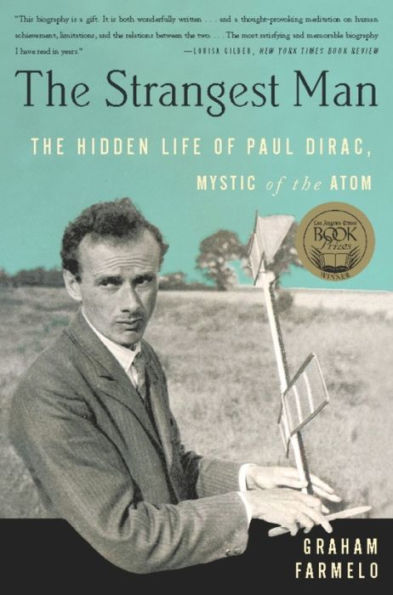This biography is a gift. It is both wonderfully written…and a thought-provoking meditation on human achievement, limitations and the relations between the two. Here we find a man with an almost miraculous apprehension of the structure of the physical world, coupled with gentle incomprehension of that less logical, messier world, the world of other people…The science writing in The Strangest Man isn't glib, but neither does it require problem-solving on the part of the reader. In most cases, Farmelo presents the technical matter clearly and efficiently, and in all cases—one of the great joys of the book—Dirac's scientific insights are placed within the circumstances in which they were born…the most satisfying and memorable biography I have read in years.
—The New York Times
Along with Einstein, Bohr, Heisenberg, Pauli and Schrodinger, Paul Dirac (1902-1984) was a giant of 20th-century physics, and this rich, satisfying biography does him justice. During the 1920s, using dazzling mathematical skills, Dirac combined Einstein's theory of relativity with Schrodinger and Heisenberg's theories of quantum physics. This inspired work, which predicted the existence of antimatter, remains essential to physicists probing the frontiers of knowledge. Raised in a dysfunctional middle-class family in Bristol, England, Dirac's brilliance and oddity were apparent from adolescence. He studied engineering at a local college. Despite little mechanical ability, he quickly moved to the head of his class. He showed no interest in games, culture or socializing, made few friends and rarely spoke in class. When not in school, he preferred to study in the library. Fortunately, several teachers recognized his talents and used their influence to obtain a scholarship from Cambridge. Entering in 1923, he quickly displayed mathematical insights that laid the foundation of quantum mechanics. In 1933, he shared the Nobel Prize for physics with Schrodinger. Though he was not quite as prolific after winning the award, Dirac continued to produce original ideas and contributed modestly to atomic research during World War II. Physics instructor Farmelo (editor: It Must Be Beautiful: Great Equations of Modern Science, 2002) works diligently and often successfully to explain Dirac's accomplishments, but readers who remain puzzled will still love the nuanced portrayal of an introverted eccentric who held his own in a small clique of revolutionary scientific geniuses.
American Scientist
“[A] highly readable and sympathetic biography of the taciturn British physicist who can be said, with little exaggeration, to have invented modern theoretical physics. The book is a real achievement, alternately gripping and illuminating.”
Natural History
“Farmelo’s eloquent and empathetic examination of Dirac’s life raises this book above the level of workmanlike popularization. Using personal interviews, scientific archives, and newly released documents and letters, he’s managed – as much as anyone could – to dispel the impression of the physicist as a real-life Mr. Spock, the half Vulcan of Star Trek.”
Science
“[A] consummate and seamless biography…. Farmelo has succeeded masterfully in the difficult genre of writing a great scientist’s life for a general audience.”
Physics Today
“[An] excellent biography of a hero of physics…. [I]n The Strangest Man, we are treated to a fascinating, thoroughly researched, and well-written account of one of the most important figures of modern physics.”
Kirkus *Starred Review*
“Paul Dirac was a giant of 20th-century physics, and this rich, satisfying biography does him justice…. [A] nuanced portrayal of an introverted eccentric who held his own in a small clique of revolutionary scientific geniuses.”
Library Journal
“Farmelo did not pick the easiest biography to write – its subject lived a largely solitary life in deep thought. But Dirac was also beset with tragedy… and in that respect, the author proposes some novel insights into what shaped the man. This would be a strong addition to a bibliography of magnificent 20th-century physicist biographies, including Walter Issacson’s Einstein, Kai Bird and Martin J. Sherwin’s American Prometheus: The Triumph and Tragedy of J. Robert Oppenheimer, and James Gleick’s Genius: The Life and Science of Richard Feynman.”
American Journal of Physics
“[A] very moving biography…. It would have been easy to simply fill the biography with Dirac stories of which there is a cornucopia, many of which are actually true. But Farmelo does much more than that. He has met and spoken with people who knew Dirac including the surviving members of his family. He has been to where Dirac lived and worked and he understands the physics. What has emerged is a 558 page biography, which is a model of the genre. Dirac was so private and emotionally self-contained that one wonders if anyone really knew him. Farmelo’s book is as close as we are likely to come."



